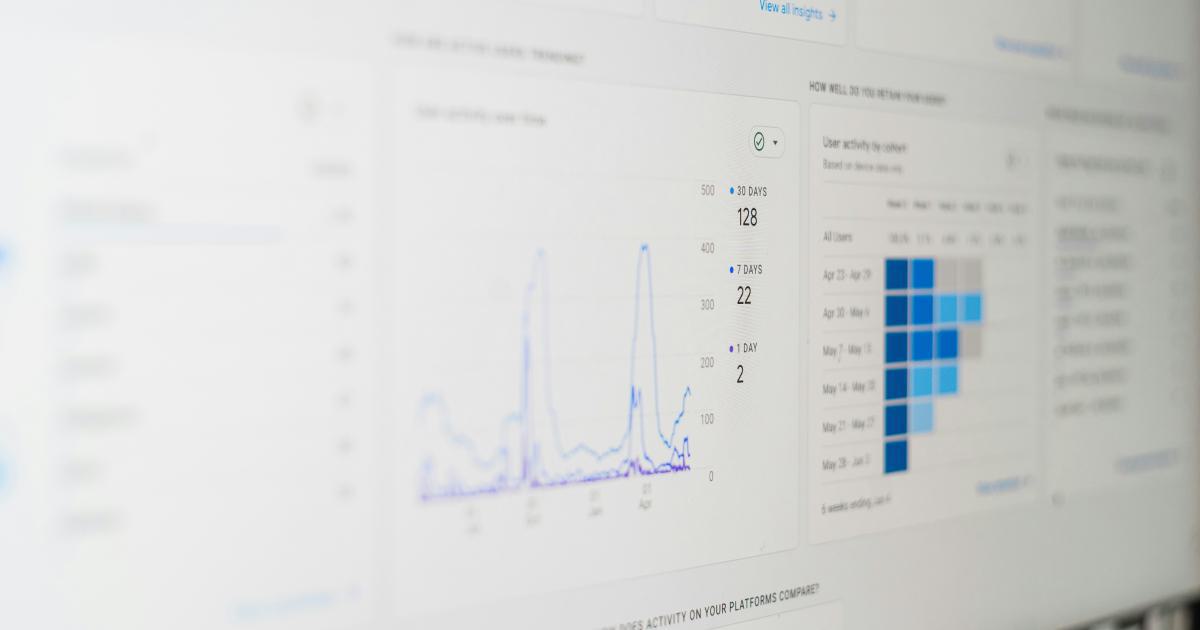When Should You Implement A/B Testing Reports?


The Importance of A/B Testing
A/B testing, also known as split testing, is a powerful tool for data-driven decision-making in the digital marketing and product development realms. By comparing the performance of two or more variations of a webpage, email, advertisement, or feature, businesses can make informed decisions about which version delivers the best results.

A/B testing allows companies to test hypotheses, optimize user experiences, and continuously improve their digital assets. The insights gained from these tests can lead to increased conversions, higher engagement, and a better overall return on investment (ROI). It's a crucial practice for businesses that want to stay ahead of the competition and deliver exceptional customer experiences.
Understanding A/B Testing
At its core, A/B testing involves creating two (or more) versions of a digital element, such as a landing page or email subject line, and then comparing the performance of these variations. One version is the "control" (the original design or content), and the other is the "variation" (the new, modified version). The test is then run, typically with a portion of the target audience, and the results are analyzed to determine which version performs better.

The key to successful A/B testing is to isolate the specific element or elements being tested, ensure statistical significance in the results, and draw meaningful conclusions that can be applied to future decisions. By continuously testing and iterating, businesses can optimize their digital assets and experiences for maximum impact.
The Benefits of A/B Testing
Implementing A/B testing reports can provide numerous benefits for businesses, including:
Improved Conversion Rates: By testing different versions of a webpage, email, or advertisement, companies can identify the design, content, or functionality that resonates best with their target audience and drives more conversions.
Enhanced User Experience: A/B testing allows businesses to gather insights into user behavior and preferences, enabling them to create more intuitive and engaging experiences for their customers.
Data-Driven Decision-Making: Rather than relying on assumptions or gut instincts, A/B testing provides concrete data and evidence to guide business decisions, reducing the risk of costly mistakes.
Competitive Advantage: Businesses that consistently utilize A/B testing can stay ahead of the curve, adapting quickly to changing market conditions and user preferences.
Increased Return on Investment (ROI): By optimizing digital assets and marketing campaigns through A/B testing, companies can see a higher return on their investment, ultimately driving more revenue and profitability.

When to Implement A/B Testing Reports
Determining the right time to implement A/B testing reports is crucial for maximizing their impact and ensuring that the insights gleaned are actionable and valuable. Here are some key considerations for when to implement A/B testing reports:
1. Established Digital Presence
A/B testing is most effective when you have an established digital presence, such as a website, mobile app, or email marketing program. If you're just starting out, it's generally advisable to focus on building a solid foundation and understanding your target audience before diving into extensive A/B testing.

Once you have a consistent flow of traffic and user interactions, you can begin to identify areas of your digital assets that could benefit from optimization through A/B testing.
2. Clear Business Objectives
Before launching any A/B testing efforts, it's essential to have a clear understanding of your business objectives. What are you trying to achieve? Are you aiming to increase conversions, improve user engagement, or enhance the overall customer experience? Clearly defined goals will help you determine the most relevant elements to test and ensure that your A/B testing efforts are aligned with your strategic priorities.

3. Sufficient Traffic and Engagement
For A/B testing to be statistically significant and yield meaningful insights, you'll need a sufficient volume of traffic and user engagement. The specific thresholds will depend on the size of your audience and the complexity of the test, but generally, you'll want to have at least a few hundred unique visitors per variation to ensure reliable results.

If your website or digital assets don't currently have the necessary traffic and engagement levels, it may be worthwhile to focus on driving more visitors and improving user interactions before launching A/B testing initiatives.
4. Technical Capabilities and Resources
Implementing A/B testing requires the right tools, infrastructure, and technical expertise. You'll need to ensure that your website or digital platform can support A/B testing functionality, whether that's through a specialized testing platform, a content management system (CMS) integration, or custom development.

Additionally, you'll need to have the necessary resources, such as data analysts, marketing specialists, and designers, to create and evaluate the test variations effectively. Assessing your internal capabilities and determining if you need to invest in additional tools or hire specialized talent can help you determine the right time to implement A/B testing reports.
5. Specific Areas to Test
Effective A/B testing is focused on specific, actionable areas of your digital assets that have the potential to drive significant improvements. These could include:
- Landing page design and layout
- Call-to-action (CTA) buttons and copy
- Product page features and functionality
- Email subject lines and content
- Advertising creatives and messaging

Before launching A/B testing efforts, take the time to identify the key areas of your digital presence that could benefit the most from optimization. This will help you prioritize your testing efforts and ensure that you're targeting the right elements for maximum impact.
6. Ability to Analyze and Iterate
Implementing A/B testing reports is just the first step; the true value comes from the ability to analyze the results and continuously iterate based on the insights gained. Ensure that you have the necessary data analysis capabilities, whether in-house or through external partners, to effectively interpret the test results and make informed decisions.

Additionally, be prepared to allocate the time and resources needed to implement the winning variations and plan for the next round of testing. A/B testing is an ongoing process, and your ability to analyze, learn, and adapt will be crucial to your long-term success.
Implementing A/B Testing Reports
Once you've determined that the time is right to implement A/B testing reports, it's important to follow a structured process to ensure the success of your efforts. Here are the key steps to consider:
1. Define Your Objectives and Hypotheses
Start by clearly defining your business objectives and the specific goals you hope to achieve through A/B testing. These could include increasing conversion rates, improving user engagement, or enhancing the overall customer experience.

Next, formulate hypotheses about what changes or variations might lead to the desired outcomes. These hypotheses should be based on your understanding of your target audience, industry best practices, and any previous data or user feedback you've gathered.
2. Identify the Elements to Test
Determine the specific elements of your digital assets that you want to test. This could include:
- Landing page design and layout
- Call-to-action (CTA) buttons and copy
- Product page features and functionality
- Email subject lines and content
- Advertising creatives and messaging

Prioritize the elements that have the highest potential for impact based on your business objectives and user insights.
3. Design and Develop the Test Variations
Create the variations you want to test, ensuring that they are significantly different from the control version. This may involve collaborating with your design, development, and content teams to create the necessary assets.

When designing the variations, be sure to focus on the specific elements you're testing and avoid making too many changes at once, as that can make it difficult to determine the root cause of any performance differences.
4. Set Up the A/B Test
Utilize a specialized A/B testing platform or integrate the necessary functionality into your existing website or digital assets. Ensure that the test setup is configured correctly, with the proper tracking and data collection mechanisms in place.

Determine the appropriate sample size, test duration, and traffic allocation strategy to ensure statistical significance and reliable results.
5. Monitor and Analyze the Results
Closely monitor the A/B test during its runtime, tracking key performance indicators (KPIs) such as conversion rates, engagement metrics, and revenue impact. Analyze the results to determine which variation performed better and by what margin.

Be sure to consider the statistical significance of the results and ensure that any conclusions drawn are supported by the data.
6. Implement the Winning Variation
Once you've identified the winning variation, implement it as the new "control" and prepare for the next round of testing. Continuously iterate and refine your digital assets based on the insights gained from your A/B testing efforts.

Remember, A/B testing is an ongoing process, and the insights you gather will inform your future decisions and help you stay ahead of the curve in your industry.
Best Practices for A/B Testing Reports
To ensure the success of your A/B testing initiatives, consider the following best practices:
1. Focus on Meaningful Metrics
Identify the key performance indicators (KPIs) that are most relevant to your business objectives, such as conversion rates, click-through rates, or revenue. Avoid getting bogged down in vanity metrics that don't directly impact your bottom line.

2. Start Small and Iterate
Begin with simple, low-risk tests, and gradually increase the complexity and scope of your experiments as you build experience and confidence. Iterate on the winning variations and continue testing to drive continuous improvement.

3. Ensure Statistical Significance
Make sure your sample sizes are large enough and the test durations are long enough to achieve statistically significant results. This will help you avoid drawing conclusions based on inconclusive data.

4. Document and Communicate Insights
Maintain detailed records of your A/B testing efforts, including the hypotheses, test setups, and results. Share these insights with relevant stakeholders to ensure that the knowledge gained is applied to future decisions.

5. Integrate with Other Data Sources
Combine the insights from your A/B testing reports with other data sources, such as customer surveys, user behavior analytics, and market research, to gain a more holistic understanding of your target audience and their preferences.

6. Continuously Optimize and Innovate
Treat A/B testing as an ongoing process, not a one-time effort. Continuously test new ideas, refine your digital assets, and stay ahead of the curve in your industry.

By following these best practices, you can ensure that your A/B testing reports provide meaningful, actionable insights that drive tangible improvements to your business.
Conclusion
Implementing A/B testing reports is a powerful strategy for data-driven decision-making and continuous optimization of your digital assets. By testing and iterating on different elements of your website, mobile app, email campaigns, and advertising, you can gain valuable insights into user preferences and behavior, leading to increased conversions, engagement, and overall business success.

The key is to time your A/B testing efforts appropriately, ensuring that you have the necessary traffic, technical capabilities, and clear business objectives in place. By following best practices and continuously refining your testing approach, you can unlock the full potential of A/B testing and stay ahead of the competition in your industry.